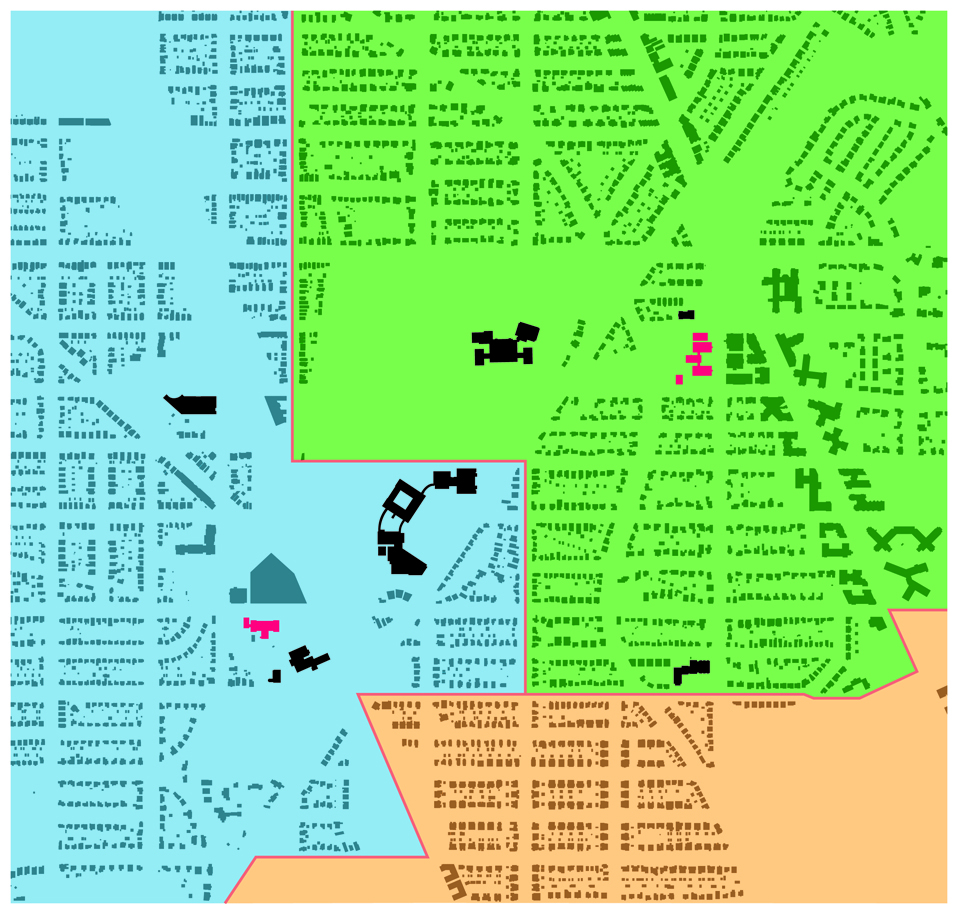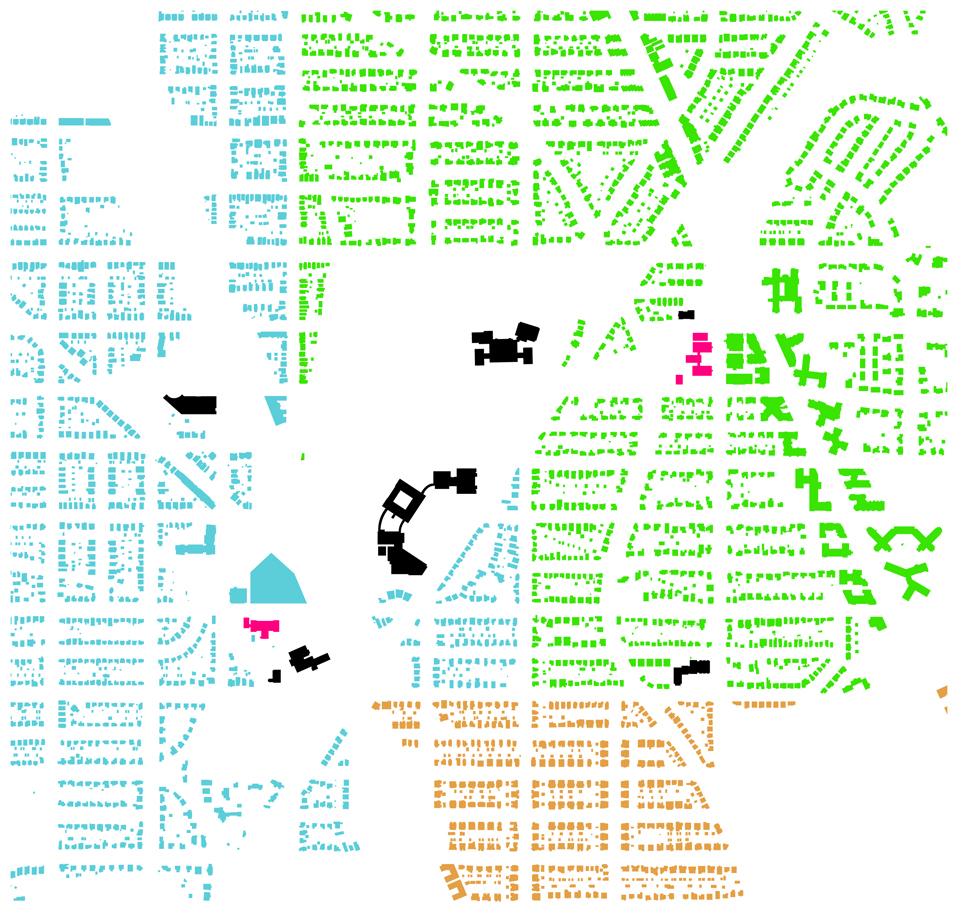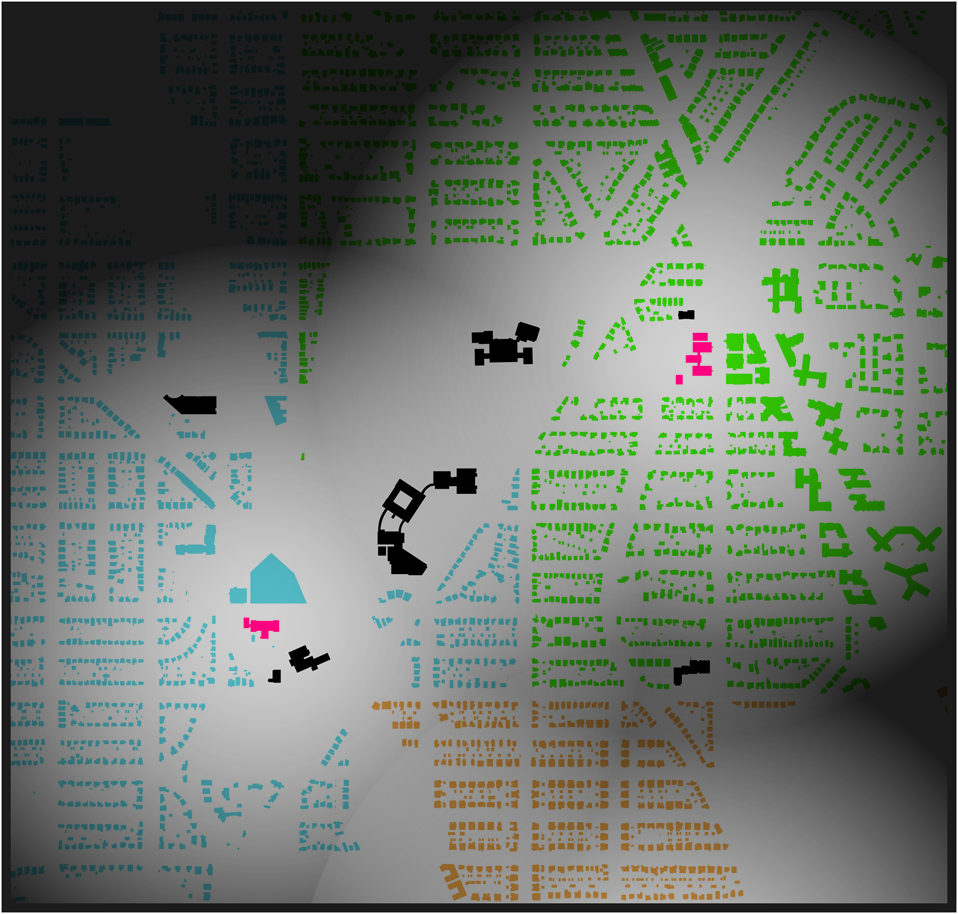So, in addition to the visible boundaries of the city, there are the invisible ones, ones that are really only legible to a bureaucracy, but have significant effects on the lives of residents. Because it affects individuals so young and even effects the parents, where someone goes to school seriously alters the social geography of cities. They decide where the majority of socialization occurs: in one school, in another school; in private schools, in public schools; in classrooms or in breakfast nooks.
When I was a wee little Flannie, attending Murch and carousing about my block, I had neighbors across the street whom I hardly knew. Why? They went to Janney. We met and played outside occasionally, but by 3rd grade, we both had already formed our social lives, and that was it. Our parents were likewise divided; they knew each other, but that was it. My street was the boundary between two schools and there was a palpable difference between the facing blocks.
In the Reno-Tenleytown-Tobago area, there are seven schools that provide Nursery school through Twelfth Grade education. Obviously, there’s also American University, but that’s not as relevant since its students are not shaped as much by boundaries and divisions. There are also any number of private and parochial schools students could attend, three of which are in the area, but with a minivan or a Volvo, you too can idle your car outside your child’s school. So let’s just do the public schools.
Students can begin at one of three public elementary schools, Murch, Janney, and Hearst. Here you can see which areas attend which schools:
Elementary schools are in fuschia. Janney (blue) is more to the southwest and Murch (green) stands to the northeast. Hearst (yellow) is too far south to be shown. Here’s another map showing how residential buildings would be divided up by DCPS.
And now a map about how easily someone could walk to school:
There is a significant reduction in the number of public middle schools, compared to elementaries, presumably due to the number of parents who move their children to private schools. Of 104 elementary schools, there are seven in the historically white part of Northwest. Of the 24 middle and junior high schools, there are two in Ward 3, Deal and Hardy. Alice Deal sits in the middle of Fort Reno Park, in front of the former Jesse Reno Colored School. Hardy is down in northern Georgetown.
Now, in DC there are 22 public high schools and 10 charter high schools. Two are west of Rock Creek, but Duke Ellington is a special arts school, so Woodrow Wilson is the only PHS that serves Ward 3. Its 1500 students are nicely situated on Fort Drive and near the metro. There is actually a bus line that runs exclusively to bring people from out of the area to the school.
Unfortunately, I can’t detail every possible private schools. The DC area has well over one hundred, so trying to explain the connections to the neighborhood would require an extensive social survey. Stay tuned for other pedsheds and a post on our harlequin zoning profile.


